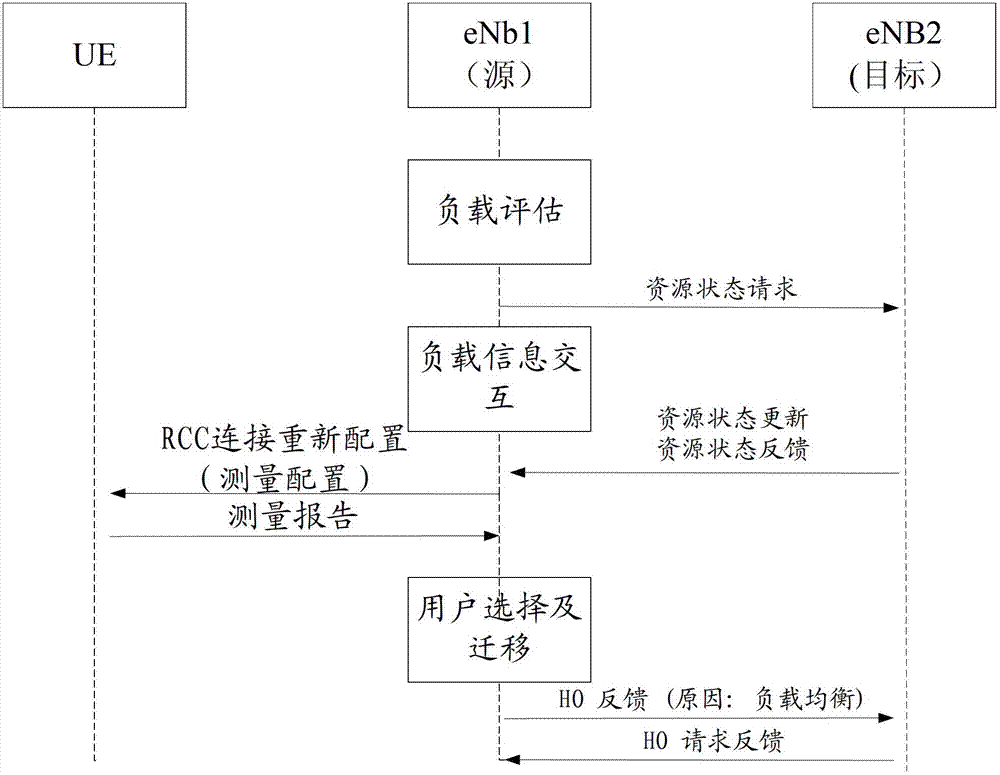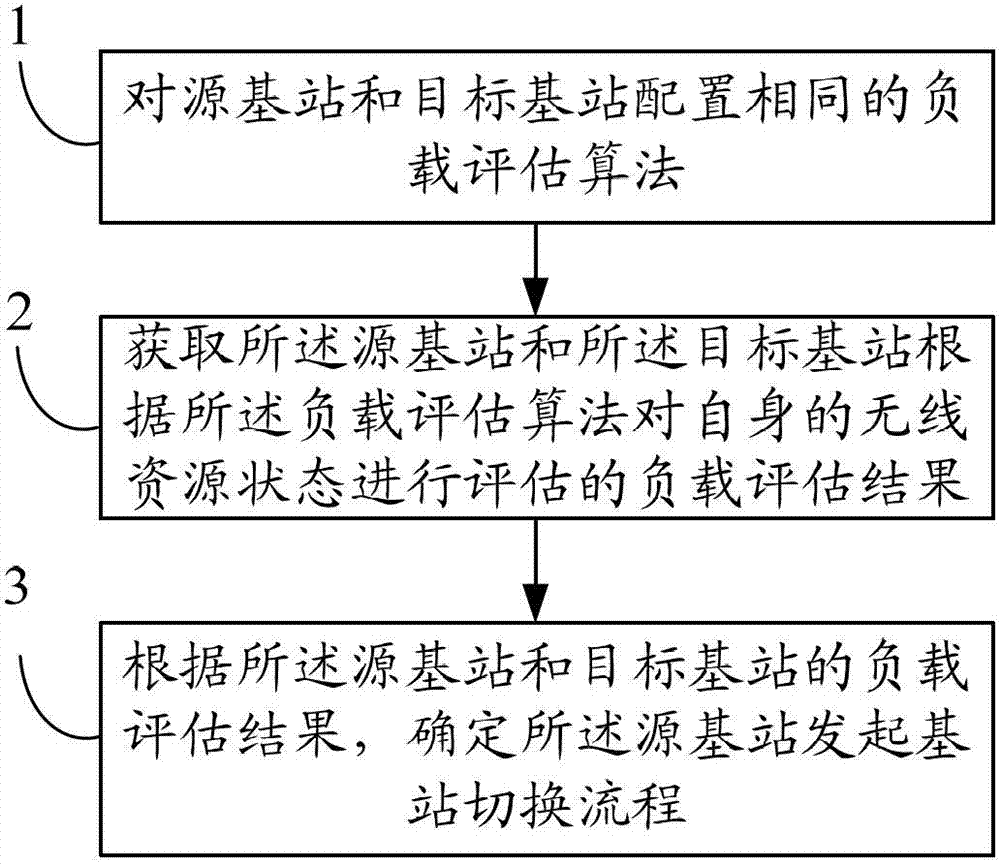Method and apparatus for load balancing configuration among base stations, and wireless network system
A load balancing and configuration method technology, applied in wireless communication, network traffic/resource management, electrical components, etc., can solve problems such as the situation that the base station load cannot be truly reflected, the load evaluation standards are inconsistent, and there are no clear definitions or algorithm requirements.
- Summary
- Abstract
- Description
- Claims
- Application Information
AI Technical Summary
Problems solved by technology
Method used
Image
Examples
Embodiment 1
[0067] Such as figure 2 As shown, a base station switching method includes the following steps:
[0068] Step 1, configure a load assessment algorithm for the source base station and the target base station, wherein the load assessment algorithm preferably includes: performing load assessment using the lowest user experience guarantee speed corresponding to different service types, and the minimum user experience guarantee speed can be, for example, a The minimum guaranteed speed corresponding to one data service is 5M / bps, and the minimum guaranteed speed corresponding to the other data service is 1M / bps, etc.;
[0069] Step 2, obtaining load evaluation results of the source base station and the target base station evaluating their own wireless resource states according to the load evaluation algorithm;
[0070] Step 3, according to the load evaluation results of the source base station and the target base station, determine that the source base station initiates a base sta...
Embodiment 2
[0105] Such as Figure 8 As shown, a base station switching device includes: a configuration module configured to configure the same load evaluation algorithm for the source base station and a target base station; The load evaluation result of resource status evaluation; a handover control module, configured to determine that the source base station initiates a base station handover process according to the load evaluation results of the source base station and the target base station.
[0106] Further, it may also include:
[0107] The checking module is configured to determine the accuracy of load information interaction between the source base station and the target base station according to the load evaluation result of the target base station.
[0108] In order to reflect the load situation of the base station more accurately, the acquisition module will obtain the load evaluation results of the source base station and the target base station according to the load evalua...
Embodiment 3
[0121] A wireless network system, including a source base station and a target base station, the source base station and the target base station are connected through an X2 interface, and the system also includes a base station load balancing device as described in Embodiment 2, wherein the base station The load balancing device is respectively connected to the source base station and the target base station through network cables or optical fibers; the base station load balancing device is preferably a monitoring server.
[0122] The system as Figure 9 As shown, the source base station and the target base station are connected through the X2 interface to exchange load information and handover signaling; the base station load balancing device or monitoring server can be connected to the source base station and the target base station through network cables and optical fibers to configure the load of the source base station and the target base station. Evaluation algorithm, us...
PUM
 Login to View More
Login to View More Abstract
Description
Claims
Application Information
 Login to View More
Login to View More - R&D
- Intellectual Property
- Life Sciences
- Materials
- Tech Scout
- Unparalleled Data Quality
- Higher Quality Content
- 60% Fewer Hallucinations
Browse by: Latest US Patents, China's latest patents, Technical Efficacy Thesaurus, Application Domain, Technology Topic, Popular Technical Reports.
© 2025 PatSnap. All rights reserved.Legal|Privacy policy|Modern Slavery Act Transparency Statement|Sitemap|About US| Contact US: help@patsnap.com



